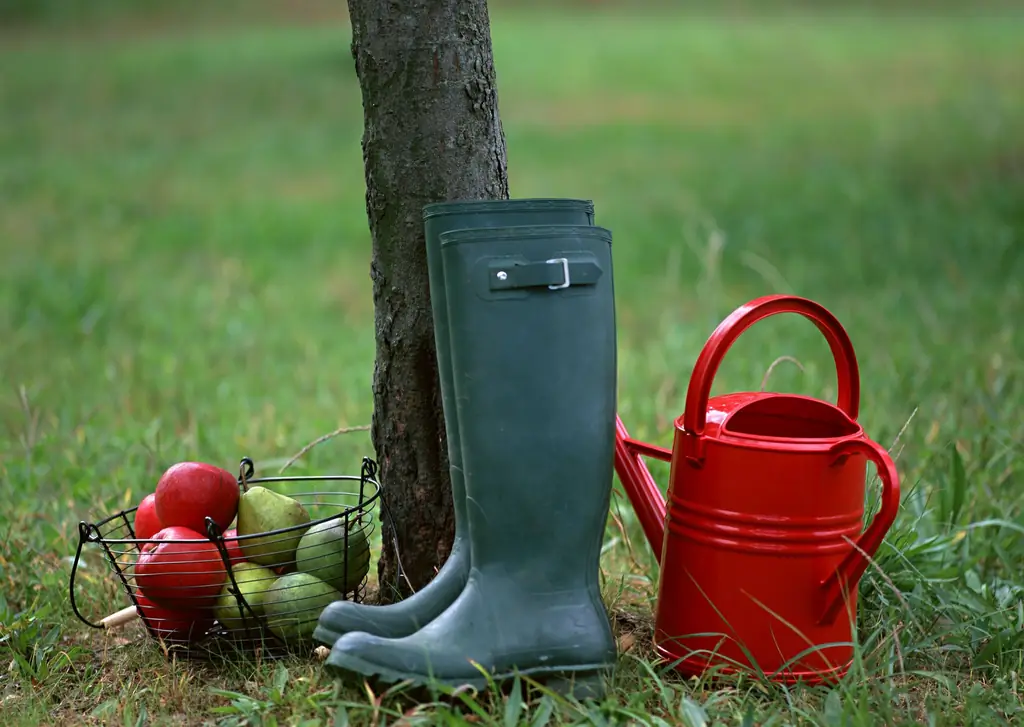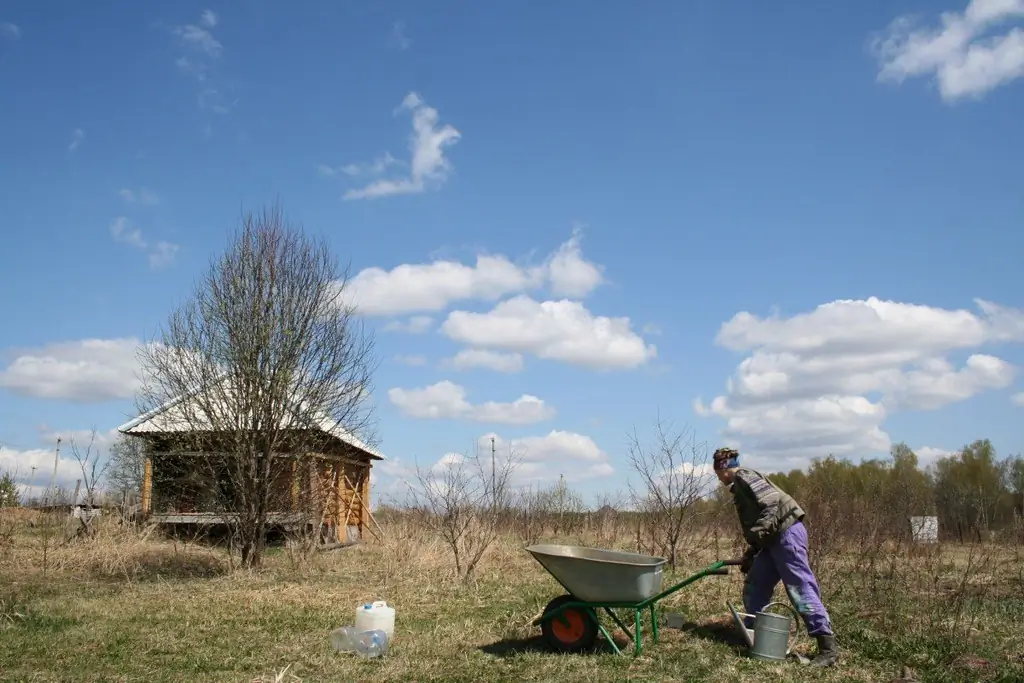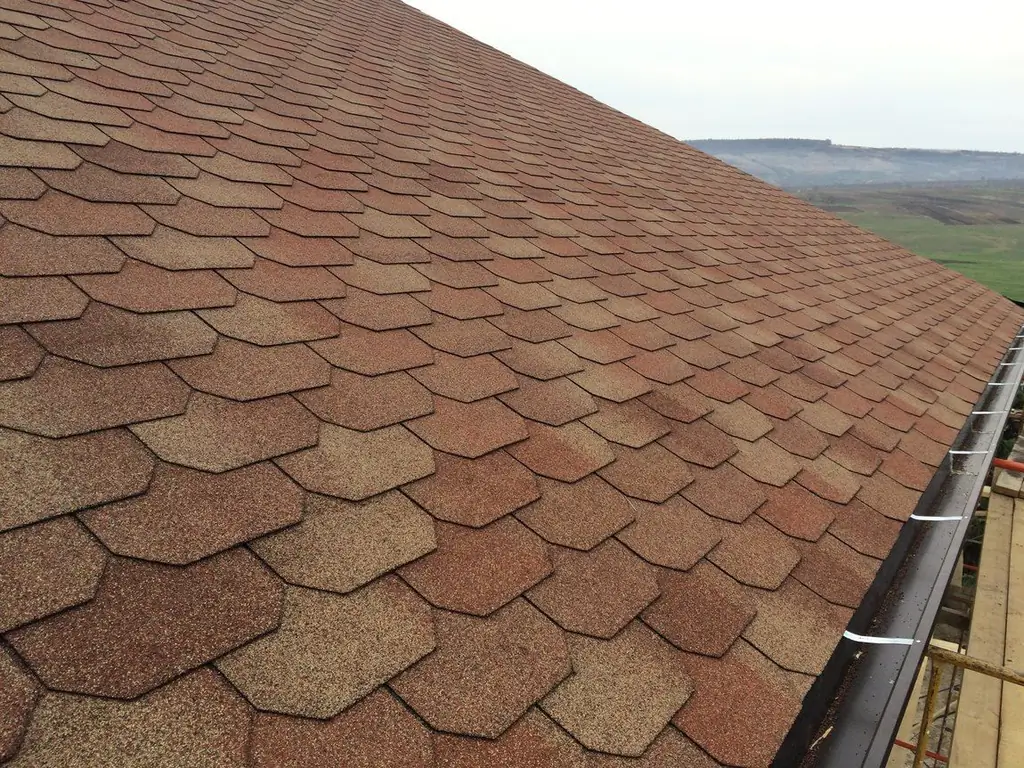
Table of contents:
- Author Bailey Albertson [email protected].
- Public 2023-12-17 12:53.
- Last modified 2025-01-23 12:41.
Autumn work in the garden and vegetable garden

Autumn comes into its own, and summer worries at the summer cottage are already over. But every owner of such a site knows that September is no less stressful month, and you will have to work if you want the dacha to meet you in full combat readiness next year, in the spring.
In September, the harvest season ends, and this means that you need to attend to the collection and storage of vegetables, fruits, seeds. You should also properly prepare the soil for wintering.
To do everything right and not miss a single detail, use the tips and recommendations of experienced gardeners, which we will provide in this article.
Content
- 1 Autumn work in the garden
- 2 Autumn processing of fruit trees
- 3 Caring for the front garden in autumn
- 4 What trees can be planted in autumn
- 5 How to insulate trees for the winter
- 6 Video about autumn work at their summer cottage
Autumn work in the garden
The main thing that needs to be done in the garden in the fall is harvesting vegetables, and you should not delay with it. For example, eggplants that have sat on the beds will be coarse and bitter.
- Pay attention to tomatoes and bell peppers. When their fruits reach the size characteristic of the variety, you can safely remove them, even if they seem to be immature in color. Leave them to ripen in a dry, light place, such as a windowsill.
- Avoid overripe cucumbers. There are many varieties that do not turn yellow when overripe, but such fruits lose their taste and their skin is very rough. These cucumbers are best left to seed, allowing them to grow to size.
- Zucchini and zucchini that you intend to use for food and for preservation, remove from the garden when the size of the fruit is 1/3 of the maximum size. For long-term storage, the fruits must be grown to a state in which the skin becomes hard.
- Select cabbage for storage especially carefully. The heads of cabbage should not be dry or withered, without leaves tainted by rot. The length of the stalk is no more than 3 cm. Before putting the cabbage in the basement, wrap each head of cabbage with thick paper, or put it in a plastic bag, releasing all the air from it. This will save the cabbage from rotting indoors.
- Carrots require particularly gentle handling when harvesting, as they ripen slowly and their surface is very fragile. Its safety is influenced not only by the variety, but also by the soil in which vegetables grow. For example, sufficient potassium in the soil can provide good keeping quality.

Autumn work in the garden consists not only in harvesting, but also in its safety. Storing vegetables correctly in the basement is especially important. For example, radishes and beets should be stored in the same way as potatoes - in a simple bulk. But for turnips and carrots, small boxes should be prepared, in each of which 15-20 root crops will be laid. Sprinkle each layer of carrots with a mixture of sand and chalk when laying.
Autumn processing of fruit trees
The September chores of the summer resident include caring for fruit trees.
After the fruit is harvested, but before the leaves fall, spray the tree crowns with 5% urea (for 10 liters of water - 500 g). This will protect your apple and pear trees from scab pathogens.
The basic rules for harvesting fruits are as follows:
- Do not pick fruits that are wet from rain or dew;
- Drain the crop as soon as possible after removal to the basement: rapid cooling contributes to long-term storage;
- Select for storage healthy, strong fruits without external damage, with stalks;
- Use a stepladder and a fruit picker to collect fruits from trees.
After all the fruits are removed from the trees, carry out the autumn processing of fruit trees, make sanitary pruning. Remove branches with signs of disease, drying out and scrapping on the ring, and cover the places of the cuts with garden varnish.
Remove the props that held the large branches and disinfect them before storing.

In late September or early October, don't forget to dig up the soil under berry bushes and fruit trees. This will provide the root system with the necessary moisture and oxygen, and at the same time will help to find and destroy the wintering places of rodents and other pests.
If you have a vineyard on your property, then you know that by the end of September the grapes are fully ripe and should be removed from the branches. After that, you need to spray the bushes with a 3% solution of ferrous sulfate. This will help eradicate the fungal infection. Carefully remove the leaves from the vineyard and prune the branches. If the fall is dry and warm, arrange for watering in your vineyard.
The first decade of September is an excellent time for planting strawberries and strawberries in pre-prepared beds. On the same days, it is good to harvest and plant cuttings of red currant, and in the second half of September - black. Once the horizontal layers have taken root, the currants and gooseberries can be transplanted to a permanent location.
Front garden care in autumn
The front garden in autumn is filled with a variety of flowering plants, therefore it is unusually beautiful. And although the amount of work is now much smaller, but the care of the front garden in the fall is very important.
The first thing that summer residents do in the front garden is the division and transplantation of perennial flowers.
- Spray roses in order to prevent pests and diseases. In early September, fertilize roses with potash fertilizers at the rate of 30-40 g per sq. This is just the right time to plant new bushes.
- Perennials such as astilbe, phlox and irises need to be propagated by dividing the bushes. Dig the ground under them and fertilize them with compost. By the way, if the plants are still in the flowering period, they should not be divided.
- Loosen the soil around the clematis, weed out and water as needed. Especially large bushes can be dug up and divided. They are planted in pre-prepared pits, deepening the stem by 6 cm. Trim the planting with slats or bricks, put insulation on top to cover clematis for the winter.
- Work with dahlias is carried out after the first frost. Cut off the stems 4-85 cm, dig out the root tubers and store them in a cool dry place for the winter.

If you have a lawn, then it needs aeration. Over the summer, the soil of the lawn has become very compacted, and this makes it difficult for oxygen to enter the soil, to the root system of the grass, which negatively affects the growth and appearance. Checking the degree of compaction is quite simple. Take a match and drive it into the soil. If the match comes in easily, then the soil is in order. If not, then aeration should be carried out: make cuts or holes in the soil with a garden fork or aerator shoes.
Also scarify the lawn, that is, remove all debris and felt, and also treat with herbicides against the growth of moss, and, if necessary, sow the resulting bald spots with grass.
What trees can be planted in autumn
Trees with a closed root system, and the same shrubs, can be planted literally from the time the snow melts to the first frost. Only the falling leaves and winter are not suitable for this activity. But it is still better to choose a time that is suitable for seedlings with an open rhizome system. Autumn is the preferred season for almost all fruit trees.
Gooseberries are very fond of sunlight, and therefore should be planted in open areas that are protected from the effects of wind.
Fall is a great time to plant honeysuckle, as a plant planted in spring may not take root well.
Apple tree seedlings are planted in the fall. Thanks to this, the root system is restored after planting during the fall and winter.
Black and red currants love open, sunny places, loose and fertile soil. The best time for planting seedlings is early autumn, first half of September.

There are not many varieties of plum that can withstand the climate of the middle zone. In addition, plums have recently been grown in our area. Most often, long-established varieties of folk selection are used, which are distinguished by frost resistance. Recently, breeders have been developing more and more new varieties that give an excellent harvest even after harsh winters. Plum seedlings are planted in September in an open place in well-loosened soil.
Autumn is also good for planting pears. Young trees need watering only during a drought, since the deep and powerful root system of the pear is itself capable of producing water in the required quantities.
How to insulate trees for the winter
In order for the trees to winter successfully, they must be treated with a preventive solution. The near-trunk zone needs to be mulched, and small fences should be built around it. This will help your garden to winter well and subsequently delight you with harvests.
Before insulating the trunk, weed out all the weeds near the tree and loosen the ground about 15 cm deep. Treat the stem and skeletal branches with a copper sulfate solution or fungicide to protect the stem from bacteria and fungi. One treatment is enough for the whole winter.

Mulching is a very effective way of protecting the soil of a tree from drying out and temperature changes. It helps to retain moisture, reduces the depth of soil freezing in winter, and prevents the growth of weeds.
Mulching material can be of two types: permanent and dynamic.
- Permanent mulch is gravel, stone chips, glass and other similar materials that usually serve as a decorative function, but well protect the soil from drying out and weeds.
- Dynamic mulch - peat, ground bark, hay, sawdust, foliage, compost. These materials are applied every autumn, and significantly improve the properties of the soil, saturating it with useful elements.
Before mulching, treat the trunk circle with a fungicide. Then sprinkle the mulch in a layer of 10 cm. If you are using compost and humus, then the layer should be thinner to avoid rotting. In case of severe frosts, the mulch is covered with spruce branches or a meter layer of snow is poured.
The trunks of young trees should be additionally insulated. Traditionally, materials such as matting, felt, straw, burlap and spruce branches are used for wrapping, or a more modern material - agrofibre. You can put a fence around the trunk, which will protect both from frost and from rodents, for example, hares, which can damage the tree bark during the winter. In the spring, the insulation should be removed so that the surface of the trunk does not rot and the process of decay does not begin.
Video about autumn work at their summer cottage
Now your garden plot is completely ready for wintering, and it is not afraid of frosts and winds. If you have any questions or additions, leave them in the comments to the article, and we will help you find out even more about how to make the cottage even better.
Recommended:
Putting Order In The Spring At Their Summer Cottage (+ Video)

Practical advice and recommendations for cleaning the territory on the personal plot; used technique and tools
Installation Of Soft Roofs, Including Preparation Of The Roof For Work, As Well As Equipment For Work

Preparatory work before installing a soft roof. Layout and methods of laying. Features of the assembly of additional elements on the roof. Required tools
Perennials For Summer Cottages Blooming All Summer: A Selection Of Interesting Perennial Flowers

Description of perennial flowers blooming all summer: appearance, growing conditions, breeding method. Lots of photos
Unpretentious Annual Flowers For A Summer Residence: Names And Photos, Including Blooming All Summer

A selection with photos and short descriptions of beautiful and unpretentious annual flowers for novice florists
Manicure Autumn - Fashionable Autumn Trends In Nail Design And Photos Of Beautiful New Products

What fashion trends are relevant in manicure in the fall of 2019 What techniques should be used. Various styles, colors and other nuances
